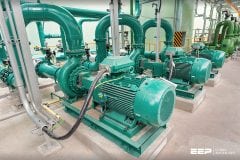
Introduction
Good Evening all, in this session I’m going to present some of the issues in drive design in the field of Electric Vehicle.
I’ve organized the whole series into modules so that each module can be covered with:
- Drive Design issues
- Comparison of different drives for EV applications
- Electrical Machine design – Viewpoints
- Science of Machines
- Design of Induction Machines
- Design of BLDC Machines
- Design of SRM Machines
- Optimization
- Recent trends in design
Let’s start the session with a comprehensive introduction about drives used in Industry as well EV applications…
EV drives versus Industrial drives

In EVs, only traction motor delivers torque to the driven wheels. Thus the vehicle performance is completely determined by the torque speed or powerspeed characteristic of the traction motor.
It can be observed that the EV motor drive is expected to be capable of offering a high torque at low speed for starting and acceleration, and a high power at high speed for cruising.
At the same time, the speed range under constant power is desired as wide as possible. Ideally, eliminating the constant torque region would provide the minimum power rating of the motor, but this is not physically realizable.

Under the normal mode of operation, a typical electric motor drive designed for industrial applications can provide constant rated torque up to its base or rated speed. At this speed, the motor reaches its rated power limit. The operation beyond the base speed up to the maximum speed is limited to this constant power region.
The maximum available torque in the natural mode of operation decreases inversely with the square of the speed. Although the machine torque in the natural mode decreases inversely with the square of the speed, for some extremely high speed motors the natural mode of operation is an appreciable part of its total power-speed profile.
Inclusion of this natural mode for such motor drives may result in a reduction of the total power requirement.

Conclusions
Conclusions drawn from the above comparisons are :
- The power requirement (rated power) for acceleration performance (acceleration time and acceleration distance) decreases as constant power region ratio increases.
- Conversely, the torque requirement (rated torque) for acceleration increases as constant power region ratio increases. This results in a larger motor size and volume.
- Passing performance (passing time and passing distance) suffers considerably as the constant power region ratio increases.
- A motor’s maximum speed has a pronounced effect on the required torque of the motor. Low speed motors with the extended constant power speed range have a much higher rated shaft torque. Consequently, they need more iron and copper to support this higher flux and torque.
- As motor power decreases (due to extending the range of constant power operation), the required torque is increasing. Therefore, although the converter power requirement (hence the converter cost) will decrease when increasing the constant power range, the motor size, volume, and cost will increase.
- Increasing the maximum speed of the motor can reduce the motor size by allowing gearing to increase shaft torque. However, the motor maximum speed cannot be increased indefinitely without incurring more cost and transmission requirements.
Requirements of EVs on Electric Motor Drives
- High instant power and high power density.
- High torque at low speeds for starting and climbing, as well as high power at high speed for cruising.
- Very wide speed range including constant-torque and constant-power regions.
- Fast torque response.
- High efficiency over wide speed and torque ranges.
- High efficiency for regenerative braking.
- High reliability and robustness for various vehicle-operating conditions.
- Downsizing, weight reduction, and lower moment of inertia.
- Fault tolerance
- Reasonable cost
- Suppression of electromagnetic interface (EMI) of motor controllers
Major Considerations in design
- The Type of frame structure
- Ventilation
- The bearing and shaft
- The Magnetic core dimensions & the winding
Design details required:
- The main dimensions of the stator.
- Details of stator windings.
- Design details of rotor and its windings
- Performance characteristics.
Specifications:
- Number of phases
- Frequency
- Rated output in kW
- Type of duty
- Voltage connections
- Temperature rise
- Speed
- Pullout torque
- Starting torque
- Starting current
- Power factor
- Efficiency/losses
- Class of insulation

References:
- Electrical Machine Design – A.K.Sawhney
- Selection of Electric Motor Drives for Electric Vehicles – X. D. Xue, K. W. E. Cheng and N. C. Cheung
- Inputs from Google and Wikipedia











Is the rest of the article available only for premium members? It’s not clear if there are further parts of the article as mentioned above i.e.
Drive Design issues
Comparison of different drives for EV applications
Electrical Machine design – Viewpoints
Science of Machines
Design of Induction Machines
Design of BLDC Machines
Design of SRM Machines
Optimization
Recent trends in design
There are a many of designs floating around in my head. I’m 42 and have seen electric motors used in such a wide variety that I am going to build one of my own
Excellent ovreview of designing of drive in EV! Thanks!